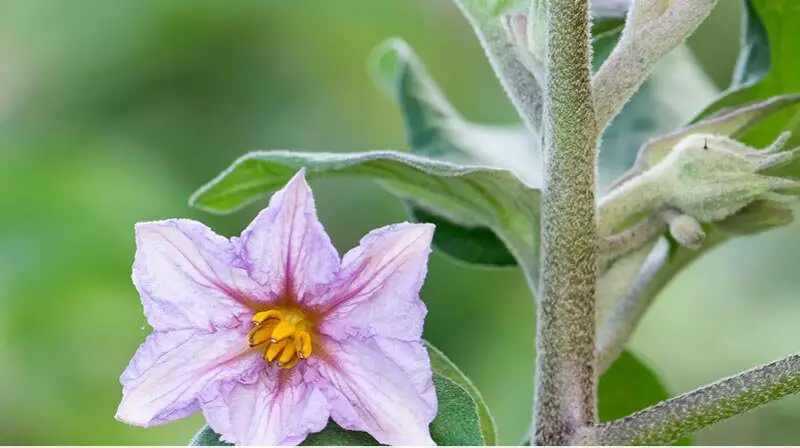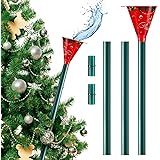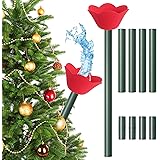Wondering how to tell if your eggplant flower has been pollinated? Look no further! Understanding the pollination process is crucial for successful fruit formation in eggplants. Fortunately, there are some simple signs you can look for to determine if your eggplant flower has been pollinated.
In this article, we’ll explore the key indicators that will help you identify if your eggplant flower has been successfully pollinated. By being able to recognize these signs, you can ensure optimal conditions for fruit development and a bountiful eggplant harvest. Let’s dive right in!
How to Know if Eggplant Flower is Pollinated: A Comprehensive Guide
Eggplants are a popular and nutritious vegetable that require pollination for fruit production. Understanding how to determine if an eggplant flower is pollinated is essential for successful cultivation.
In this comprehensive guide, we will explore various methods and indicators that can help you identify if an eggplant flower has been successfully pollinated.
1. Importance of Pollination in Eggplant
Before delving into the indicators of pollination in eggplant flowers, it’s crucial to understand the significance of the pollination process. Pollination is the transfer of pollen from the male reproductive organ (stamen) to the female reproductive organ (pistil) of a flower. In eggplants, this process is instrumental in fruit development and the formation of viable seeds.
2. The Anatomy of an Eggplant Flower
To better understand the pollination process, let’s take a closer look at the anatomy of an eggplant flower. An eggplant flower consists of both male and female reproductive parts:
– Male parts: The male reproductive organ, known as the stamen, consists of the filament and the anther. The anther holds the pollen grains.
– Female parts: The female reproductive organ, known as the pistil, is composed of the stigma, style, and ovary. The stigma is sticky to catch and receive pollen.
Read More: About Can Bamboo Damage House Foundations?
3. Signs of Successful Pollination
Now that we have a basic understanding of the eggplant flower’s anatomy, let’s explore the signs that indicate successful pollination:
3.1. Pollen Transfer
One of the first signs of successful pollination is the transfer of pollen from the male anthers to the female stigma. This can be observed by inspecting the flower closely:
– Look for a visible coating of pollen on the stigma. The color of the pollen may vary depending on the eggplant variety, ranging from yellow to dark orange.
– Gently touch the stigma with a clean finger or a small brush. If the pollen sticks to your finger or brush, it indicates successful pollen transfer.
3.2. Stigma Appearance
The appearance of the stigma can also provide insights into pollination success. Here are some indicators to look for:
– A swollen stigma: After successful pollination, the stigma may appear swollen or plump due to the pollen grains received.
– Stigma color change: The stigma color may change slightly after pollination, becoming less vibrant or slightly darker.
3.3. Petal Wilt
Once an eggplant flower is successfully pollinated, the petals will begin to wilt and eventually fall off. This is a natural process, indicating that pollination has occurred and fruit development is underway. Keep in mind that pollinated flowers will decline and drop, while unpollinated flowers may remain intact.
4. Unsuccessful Pollination Signs
Not all flowers are successfully pollinated. It’s important to recognize the signs of unsuccessful pollination to take appropriate action. Some indicators of unsuccessful pollination in eggplant flowers include:
4.1. Lack of Pollen on Stigma
If the stigma appears clean and lacks any visible pollen grains, it suggests that pollination may not have occurred.
4.2. No Petal Wilt
If the flower petals remain vibrant and intact, it is likely that pollination has not taken place. Unpollinated flowers will often stay on the plant without wilting or dropping.
4.3. Flower Desiccation
Unsuccessful pollination can lead to the flower drying up and becoming desiccated. The flower may eventually fall off, indicating that it was not pollinated and will not produce fruit.
5. Encouraging Pollination in Eggplant Flowers
To increase the chances of successful pollination in your eggplant flowers, consider implementing these techniques:
5.1. Attract Pollinators
Encourage the presence of pollinators such as bees, butterflies, and other beneficial insects in your garden. Planting flowering plants nearby can attract these pollinators and enhance the chances of successful pollination.
5.2. Hand Pollination
If pollinators are scarce or you want to ensure efficient pollination, you can perform hand pollination. Here’s how:
1. Identify a flower ready for pollination. Look for a flower with fully open petals and a visible stigma.
2. Gently touch the anthers with a small brush or q-tip to collect pollen.
3. Transfer the collected pollen to the stigma of another flower, gently rubbing it in circular motions.
5.3. Shake the Plant
Gently shaking the eggplant plants can help dislodge pollen and facilitate self-pollination. This technique mimics the natural motion caused by wind or insects and can improve pollination success.
Knowing how to determine if an eggplant flower is pollinated is vital for successful vegetable gardening. By observing indicators such as pollen transfer, stigma appearance, and petal wilt, you can gauge pollination success.
Understanding the signs of unsuccessful pollination allows you to intervene and encourage successful pollination through techniques like attracting pollinators or hand pollination. With these insights, you can ensure a bountiful harvest of delicious and nutritious eggplants in your garden.
Read More: About Can You Use a Sad Light to Grow Plants?
Frequently Asked Questions (FAQs)
When an eggplant flower has been successfully pollinated, it will develop a small fruit at the base of the flower within a week or two. This fruit will continue to grow in size, indicating successful pollination.
One of the most obvious signs of a pollinated eggplant flower is the development of a small fruit at the base of the flower. Additionally, the flower petals may begin to wither and fall off, another indication of successful pollination.
The process of pollination in eggplants usually takes place within a few days of the flower opening. However, it may still take a week or two for the small fruit to become visible as a result of successful pollination.
Yes, it is possible to manually pollinate eggplant flowers if natural pollinators are not abundant in your area. You can use a small brush or cotton swab to transfer pollen from the stamen (male part of the flower) to the stigma (female part of the flower).
If your eggplant flowers are not getting pollinated, you can try manually pollinating them using a small brush or cotton swab. Additionally, you can encourage natural pollinators, such as bees, to visit your garden by planting flowers that attract them.
No, not all eggplant flowers get pollinated. It is a natural process, and some flowers may not receive adequate pollen for successful pollination. However, with sufficient natural or manual pollination attempts, the chances of successful pollination increase.
If an eggplant flower is not pollinated, it will usually wither and fall off the plant within a few days. This is a natural process, and the plant will continue to produce new flowers in an effort to get pollinated.
Generally, it is not recommended to eat the fruit from an unpollinated eggplant flower. The fruit may be small, undeveloped, or lacking in flavor. It is best to wait for the fruit from a fully pollinated flower to ensure optimal taste and quality.
Final Thoughts
To determine if an eggplant flower is pollinated, there are a few key indicators to look out for. Firstly, a pollinated flower will develop a small fruit at its base, which will continue to grow in size. Additionally, you may notice the withering of the flower petals and the growth of a green calyx around the base of the fruit.
Another tell-tale sign is the appearance of yellow, shriveled flower remains attached to the fruit. By observing these changes, you can easily determine if the eggplant flower has been pollinated. Keep an eye out for these cues in your garden to ensure successful eggplant cultivation.
Auto Amazon Links: No products found.
Perfect Plants Christmas Tree Saver 8oz. | Easy Use Xmas Tree Preserver Food | Have Healthy Green Christmas Trees All Holiday Season
$9.97 (as of December 13, 2025 05:07 GMT +00:00 - More info- Product prices and availability are accurate as of the date/time indicated and are subject to change. Any price and availability information displayed on [relevant Amazon Site(s), as applicable] at the time of purchase will apply to the purchase of this product.
Rocky Mountain Goods Christmas Tree Food - 8 oz Tree Preservative - Reduce Needle Drop - Greener Scent - Fir, Pine, Spruce Trees - Extend Tree Life
$9.95 (as of December 13, 2025 05:07 GMT +00:00 - More info- Product prices and availability are accurate as of the date/time indicated and are subject to change. Any price and availability information displayed on [relevant Amazon Site(s), as applicable] at the time of purchase will apply to the purchase of this product.
FirEver Pure Christmas Tree Food | Preserver Additive & Season Extender for Live Xmas Trees | Keep It Green, Reduce Needle-Drop | Miracle Freshness (8 oz)
$14.99 (as of December 13, 2025 05:07 GMT +00:00 - More info- Product prices and availability are accurate as of the date/time indicated and are subject to change. Any price and availability information displayed on [relevant Amazon Site(s), as applicable] at the time of purchase will apply to the purchase of this product.
VICAMB 39.3 Inch Christmas Tree Watering Funnel,Christmas Tree Watering System Device,Long Tree Watering Funnel Spout for Indoor Outdoor Xmas Tree
$16.99 (as of December 13, 2025 05:07 GMT +00:00 - More info- Product prices and availability are accurate as of the date/time indicated and are subject to change. Any price and availability information displayed on [relevant Amazon Site(s), as applicable] at the time of purchase will apply to the purchase of this product.
EZMeetU Christmas Tree Watering Funnel, 47 Inch Flower Shape Adjustable 6 Section Design, Christmas Tree Watering System, Christmas Tree Waterer, Long Funnel Wide Opening Reusable, Plant Watering Tool
$16.99 (as of December 13, 2025 05:07 GMT +00:00 - More info- Product prices and availability are accurate as of the date/time indicated and are subject to change. Any price and availability information displayed on [relevant Amazon Site(s), as applicable] at the time of purchase will apply to the purchase of this product.
Snow Joe Premium Enviro Blend Ice Melt, Green-Coated Deicer Crystals, 50 lb - Safer Melter for Vegetation, Concrete & Metals w/ Anti-Corrosion Calcium Magnesium Acetate
$32.97 (as of December 12, 2025 19:27 GMT +00:00 - More info- Product prices and availability are accurate as of the date/time indicated and are subject to change. Any price and availability information displayed on [relevant Amazon Site(s), as applicable] at the time of purchase will apply to the purchase of this product.
Muddy Mat® Shown on TV Super Absorbent Microfiber Dog Door Mat for Muddy Paws, Non-Slip Washable Pet Rug, Quick Dry Chenille Entryway Carpet, Machine Washable Indoor Outdoor mat, Grey 30"x19"
$24.95 (as of December 12, 2025 19:27 GMT +00:00 - More info- Product prices and availability are accurate as of the date/time indicated and are subject to change. Any price and availability information displayed on [relevant Amazon Site(s), as applicable] at the time of purchase will apply to the purchase of this product.
ivtivfu Rolling Grill Basket, Removable Wooden Handle, 304 Stainless Steel, Nesting BBQ Tools, Smoker Grilling Accessories for Vegetable, Outdoor Cooking Camping, Birthday Gifts for Men Dad Husband
$25.99 (as of December 12, 2025 19:27 GMT +00:00 - More info- Product prices and availability are accurate as of the date/time indicated and are subject to change. Any price and availability information displayed on [relevant Amazon Site(s), as applicable] at the time of purchase will apply to the purchase of this product.
XXXFLOWER Plant Terrarium with Wooden Stand, Air Planter Bulb Glass Vase Metal Swivel Holder Retro Tabletop for Hydroponics Home Garden Office Decoration - 3 Bulb Vase
$18.98 (as of December 12, 2025 19:27 GMT +00:00 - More info- Product prices and availability are accurate as of the date/time indicated and are subject to change. Any price and availability information displayed on [relevant Amazon Site(s), as applicable] at the time of purchase will apply to the purchase of this product.
Zevo Flying Insect Trap Official Refill Cartridges - Fits Both Zevo Trap & MAX Indoor Fly Trap - Authentic Trap+Lock Technology to Catch Gnats, House & Fruit Flys (4 Official Refill Cartridges)
$14.97 (as of December 12, 2025 19:27 GMT +00:00 - More info- Product prices and availability are accurate as of the date/time indicated and are subject to change. Any price and availability information displayed on [relevant Amazon Site(s), as applicable] at the time of purchase will apply to the purchase of this product.











